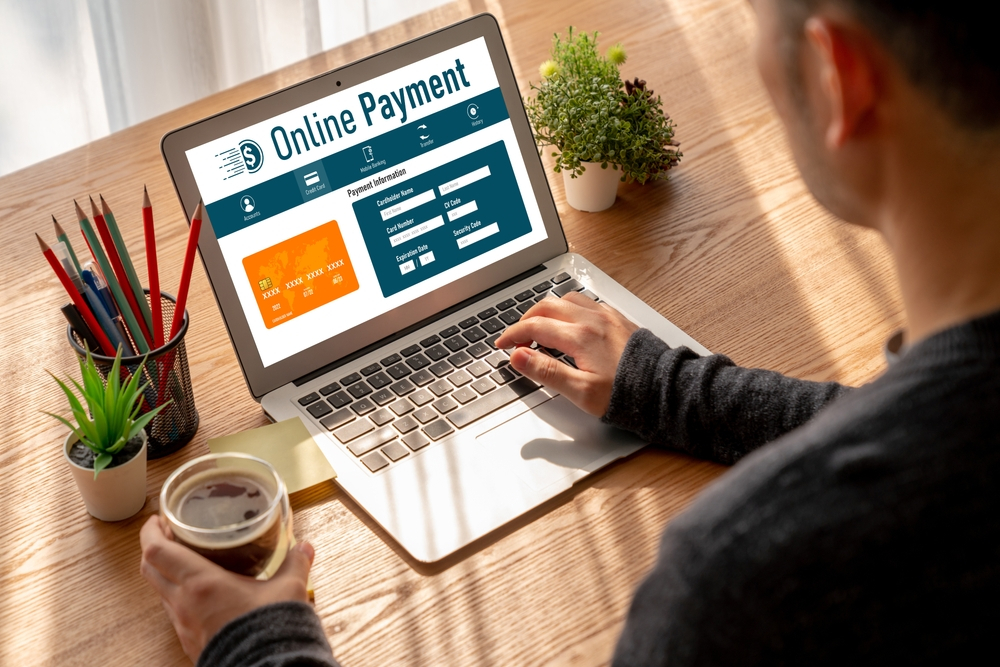
Choosing the Right Payment Gateway for Your Online Business: A Comprehensive Guide
In today’s digital age, if you’re running an online business, your payment gateway isn’t just a technical necessity – it’s the heartbeat of your e-commerce operation. It’s the secure bridge that connects your customer’s wallet to your bank account, ensuring smooth, safe, and efficient transactions. But with a plethora of options available, how do you choose the right one for your unique business needs?
This comprehensive guide will break down everything you need to know about payment gateways, helping even beginners understand the critical factors to consider, so you can make an informed decision that fuels your online success.
What is a Payment Gateway? (And Why It’s Crucial)
Imagine your online store as a physical shop. When a customer wants to buy something, they walk to the cash register and hand over their money or credit card. In the online world, there’s no physical cash register. That’s where the payment gateway comes in.
Simply put, a payment gateway is a service that authorizes credit card and other electronic payments for online businesses. It acts as a digital middleman, securely transferring information between your customer’s bank (or credit card issuer), your website, and your merchant account (where your business receives money).
Here’s a simplified breakdown of how it works:
- Customer Enters Details: A customer on your website clicks "Pay Now" and enters their payment information (credit card number, expiry, CVV, etc.).
- Encryption & Transmission: The payment gateway encrypts this sensitive data and securely sends it to the payment processor.
- Authorization Request: The payment processor sends the request to the customer’s bank to verify funds and approve the transaction.
- Approval/Decline: The bank sends back an approval or decline message.
- Notification: The payment gateway receives this message and relays it back to your website, informing both you and the customer whether the transaction was successful.
- Settlement: If approved, the funds are eventually transferred from the customer’s bank to your merchant account.
Why is choosing the right one so crucial for your online business?
- Trust & Credibility: A secure and seamless checkout process builds customer trust. If your payment gateway looks clunky or raises security red flags, customers will abandon their carts.
- Sales & Conversions: A smooth, fast, and easy checkout experience directly impacts your conversion rates. Any friction can lead to lost sales.
- Cost Efficiency: Different gateways have different fee structures. Choosing wisely can save your business significant money in transaction fees and hidden costs.
- Security & Fraud Prevention: Protecting your customers’ sensitive data and safeguarding your business from fraudulent transactions is paramount.
- Operational Efficiency: The right gateway simplifies accounting, reporting, and customer service related to payments.
Key Factors to Consider When Choosing Your Payment Gateway
Selecting a payment gateway isn’t a one-size-fits-all decision. You need to evaluate several critical factors based on your business type, size, target audience, and future goals.
1. Security and PCI DSS Compliance
This is non-negotiable. Handling sensitive financial data means security must be your top priority.
- PCI DSS Compliance: The Payment Card Industry Data Security Standard (PCI DSS) is a set of security standards designed to ensure that all companies that process, store, or transmit credit card information maintain a secure environment. Your chosen payment gateway must be PCI DSS compliant. Most reputable gateways handle this for you, but it’s vital to confirm.
- Encryption: Ensure the gateway uses robust encryption (like SSL/TLS) to protect data during transmission.
- Fraud Prevention Tools: Look for built-in tools like AVS (Address Verification Service), CVV (Card Verification Value) checks, 3D Secure (e.g., Verified by Visa, MasterCard SecureCode), and fraud scoring systems.
2. Pricing and Fee Structure
Understanding the costs associated with your payment gateway is vital for your profitability. Fees can vary significantly.
- Transaction Fees: This is the most common fee, usually a percentage of each transaction plus a small fixed amount (e.g., 2.9% + $0.30).
- Setup Fees: Some gateways charge a one-time fee to set up your account. Many modern gateways (like Stripe or PayPal) have eliminated this.
- Monthly Fees: A recurring fee charged for simply having an active account.
- Batch Fees: A small fee for processing a "batch" of transactions (often daily).
- Chargeback Fees: If a customer disputes a charge and it’s reversed, the gateway may charge you a fee for handling the chargeback process. This can be substantial.
- Refund Fees: Some gateways might charge a small fee for processing a refund.
- Cross-Border/International Fees: Higher fees for transactions involving different currencies or countries.
Pro Tip: Always read the fine print! Hidden fees can eat into your profits. Compare total costs based on your estimated transaction volume and average order value.
3. Integration and Compatibility
Your payment gateway needs to seamlessly connect with your existing e-commerce platform and other business tools.
- E-commerce Platform Integration: Does it have a direct integration or a readily available plugin for your platform (e.g., Shopify, WooCommerce, Magento, BigCommerce, Wix, Squarespace)? This makes setup much easier.
- API (Application Programming Interface): If you have a custom-built website or specific needs, a robust API allows developers to integrate the gateway directly into your system, offering more flexibility and customization.
- CRM/Accounting Software: Consider if it integrates with your Customer Relationship Management (CRM) or accounting software (e.g., QuickBooks, Xero) for streamlined data flow.
4. Supported Payment Methods
Consider your target audience and the payment options they prefer. The more options you offer, the wider your potential customer base.
- Major Credit/Debit Cards: Visa, MasterCard, American Express, Discover.
- Digital Wallets: Apple Pay, Google Pay, Samsung Pay. These offer faster, more secure checkouts.
- Local Payment Methods: If you sell internationally, consider popular local payment methods in different countries (e.g., SEPA Direct Debit in Europe, Alipay/WeChat Pay in China).
- Alternative Payment Methods: PayPal, Buy Now Pay Later services (e.g., Klarna, Afterpay), bank transfers, cryptocurrencies (if relevant to your niche).
5. User Experience (UX) for Your Customers
A smooth, intuitive checkout experience is vital for reducing cart abandonment.
- Seamless Checkout Flow: Does the gateway allow customers to complete their purchase directly on your site, or does it redirect them to another page? Redirects can sometimes cause distrust or confusion.
- Mobile Responsiveness: Ensure the checkout page is optimized for mobile devices, as a significant portion of online shopping happens on smartphones.
- Customization: Can you customize the look and feel of the checkout page to match your brand’s aesthetics?
- Speed: A fast loading and processing time for transactions is essential.
6. Fraud Prevention Tools
Beyond basic security, robust fraud prevention saves you money and headaches from chargebacks and fraudulent orders.
- Address Verification Service (AVS): Checks if the billing address provided matches the one on file with the card issuer.
- Card Verification Value (CVV/CVC): Requires the 3 or 4-digit security code from the back of the card.
- 3D Secure (e.g., Verified by Visa, MasterCard SecureCode): Adds an extra layer of security by requiring customers to enter a password or verify their identity with their bank.
- Fraud Scoring/Risk Management: Advanced systems that analyze various data points to identify potentially fraudulent transactions.
7. Customer Support
When something goes wrong with a payment, you need fast, reliable support.
- Availability: Is support available 24/7? During your business hours?
- Channels: Phone, email, live chat, knowledge base.
- Quality: Read reviews about their support responsiveness and helpfulness. Technical issues can cost you sales, so good support is invaluable.
8. Scalability and International Reach
Consider your business’s future growth and geographical expansion plans.
- Scalability: Can the gateway handle increasing transaction volumes as your business grows without performance issues or prohibitive costs?
- Multi-Currency Support: Can it process payments in multiple currencies and settle funds in your preferred currency?
- International Payouts: If you have international suppliers or team members, can it facilitate payouts across borders?
- Local Regulations: Does it comply with local payment regulations in the countries you operate in or plan to expand to?
9. Payout Speed
How quickly do approved funds actually land in your bank account?
- Settlement Time: This varies by gateway and even by business type. Some offer daily payouts, others weekly, or on a rolling basis (e.g., T+2 days, meaning transaction day plus two business days).
- Holding Periods: New businesses or those in high-risk industries might experience longer holding periods initially.
10. Reporting and Analytics
Good reporting helps you track sales, understand customer behavior, and manage your finances effectively.
- Dashboard: A user-friendly dashboard to view transactions, payouts, refunds, and chargebacks.
- Customizable Reports: Ability to generate reports for specific date ranges, payment methods, or products.
- Export Options: Can you export data for use in your accounting software or for deeper analysis?
Popular Payment Gateway Examples
While the "best" gateway depends on your specific needs, here are some widely used and highly reputable options to start your research:
- Stripe: Highly popular for its developer-friendly APIs, extensive customization options, and global reach. Known for clear pricing and robust fraud tools. Great for businesses looking for flexibility and international sales.
- PayPal: One of the most recognized names, offering easy setup and high customer trust. Offers both a standard checkout (redirects to PayPal) and a more integrated option. Ideal for small businesses starting out due to its simplicity and brand recognition.
- Square: Often associated with in-person POS systems, but offers excellent online payment processing. Known for straightforward pricing and integrated solutions for businesses that operate both online and offline.
- Authorize.Net: A long-standing and robust gateway, often chosen by larger businesses or those with complex needs. It offers advanced features and can integrate with many merchant accounts.
- Shopify Payments: Built directly into the Shopify e-commerce platform, simplifying setup and often offering lower transaction fees for Shopify store owners. It removes the need for a separate third-party gateway in many cases.
- WooCommerce Payments: Similar to Shopify Payments, this is a native payment solution for WooCommerce stores, making it easy to manage payments directly from your WordPress dashboard.
Steps to Choose the Right Payment Gateway
Now that you understand the factors, here’s a step-by-step approach to making your decision:
-
Assess Your Business Needs:
- What’s your typical transaction volume and average order value?
- What e-commerce platform are you using?
- Who is your target audience (local, international)?
- What payment methods do your customers prefer?
- What’s your budget for fees?
- Do you sell high-risk products or services?
-
Research and Shortlist:
- Based on your needs, research 3-5 payment gateways that seem like a good fit.
- Read reviews from other businesses, especially those similar to yours.
-
Compare Features and Pricing:
- Create a spreadsheet to compare key factors side-by-side: transaction fees, monthly fees, security features, supported payment methods, integration options, customer support quality, and payout speeds.
- Don’t just look at percentage fees; calculate potential total costs based on your projected sales.
-
Test the User Experience (if possible):
- If a gateway offers a demo or sandbox environment, try it out to see how the checkout process feels from a customer’s perspective.
- Look at other websites using the gateways you’re considering.
-
Read the Fine Print and Ask Questions:
- Before signing up, carefully review the terms and conditions, especially regarding fees, chargeback policies, and holding periods.
- Don’t hesitate to contact the gateway’s sales or support team with any questions.
-
Start Small, Scale Up:
- If you’re a new business, you might opt for a simpler, lower-cost option initially and consider upgrading or switching as your business grows and your needs evolve.
Conclusion
Choosing the right payment gateway is a pivotal decision for your online business. It’s not just about processing payments; it’s about building trust, maximizing conversions, minimizing costs, and ensuring the long-term security and scalability of your operations.
By carefully evaluating factors like security, pricing, integration, user experience, and customer support, you can select a payment gateway that not only meets your current needs but also supports your business’s growth for years to come. Take your time, do your research, and choose wisely – your online success depends on it!



Post Comment